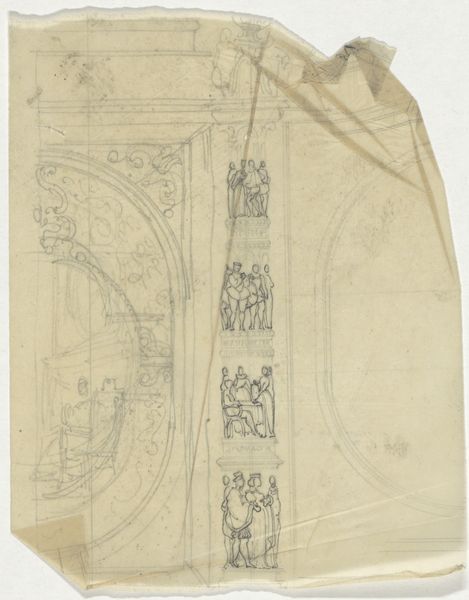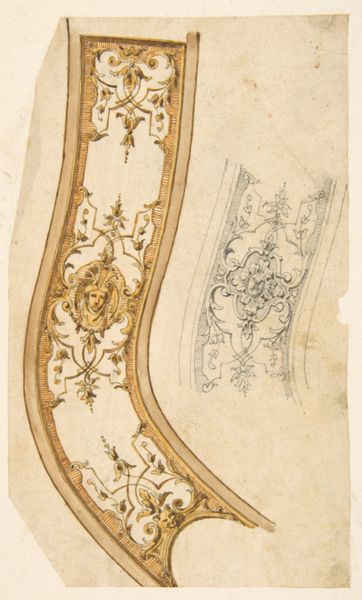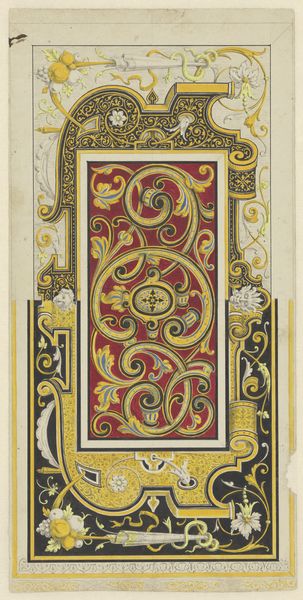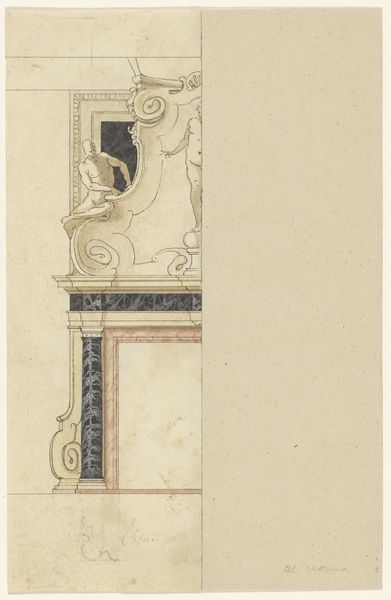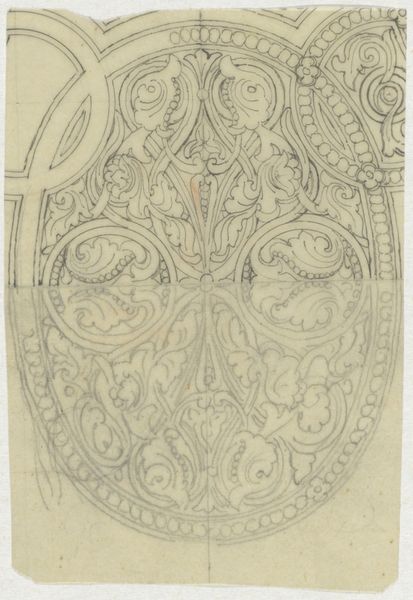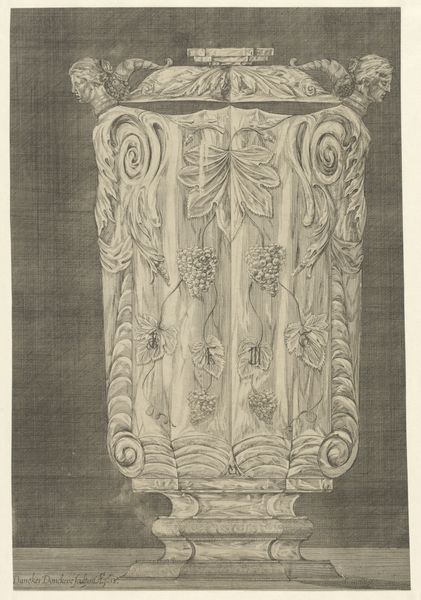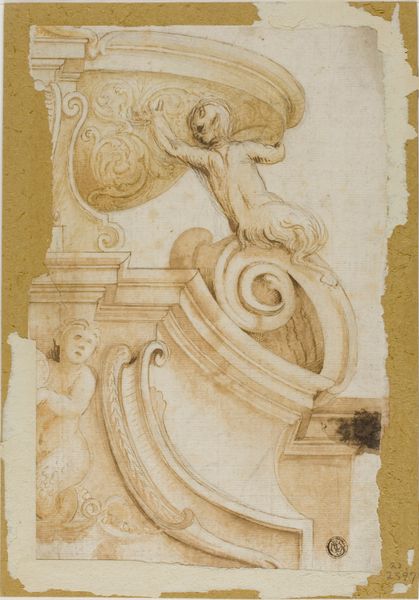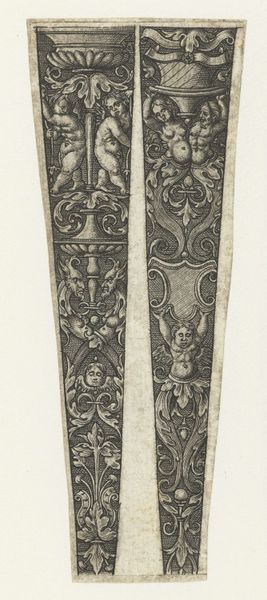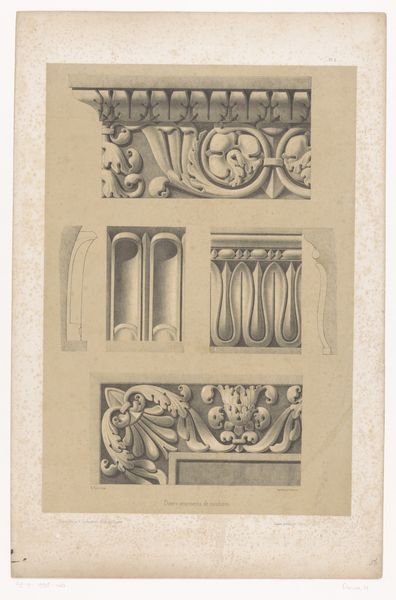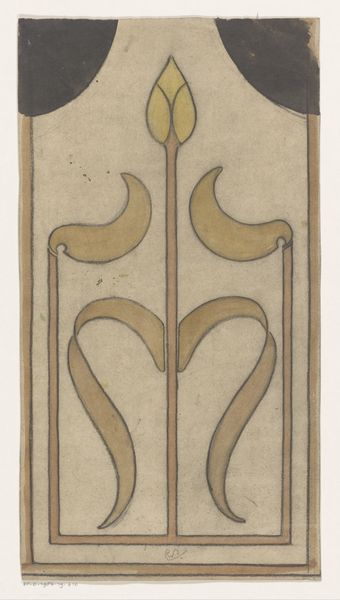
Fragmenten karton voor het glasraam in de westgevel van Joris van Egmond (Bisschop van Utrecht 1535-1559) voor de Sint Bavo Kerk te Haarlem 1541
0:00
0:00
drawing, paper, ink
#
drawing
#
paper
#
11_renaissance
#
ink
#
coloured pencil
#
geometric
#
history-painting
#
northern-renaissance
Dimensions: height 12035 mm, width 580 mm, height 3710 mm, height 76 cm, width 27 cm, depth 27 cm
Copyright: Rijks Museum: Open Domain
Curator: Take a look at this stunning preparatory drawing, titled "Fragmenten karton voor het glasraam in de westgevel van Joris van Egmond (Bisschop van Utrecht 1535-1559) voor de Sint Bavo Kerk te Haarlem," created around 1541 by Gerrit Boels. Editor: Wow, it’s surprisingly spare! Gives off a sense of blueprint rigidity mixed with that flamboyant Northern Renaissance ornamentation, but stripped of the glass colors, it feels...unfinished? Curator: It's ink and colored pencil on paper, and it's fascinating precisely because it shows us the scaffolding behind the finished window. You can almost feel the artist puzzling out the structural logic, piece by piece. Editor: Exactly! I’m curious about the pigment choices here, limited though they are. The cool blues and browns make me wonder about their sourcing. How would Boels acquire those pigments in the 16th century, and what sort of labour would that have entailed? Was this paper locally made too, or part of longer trade routes? Curator: That's the heart of it, isn't it? These weren't just materials, but the product of intense labor and commerce. You can see a deliberate refinement in the lines; his dedication is plain to see, carefully charting all of this complex ornamentation. I keep coming back to the face in the top medallion – the potentiality there feels potent. Editor: That face, supposedly Bishop Joris, really brings the entire exercise down to a very material level; the production of an idealized image for authority, carefully sketched and plotted. I wonder how much autonomy the artist really had, or were these essentially commissions dictating every last cherub and curl? Curator: Such a pertinent point! It pulls us into the tensions between creative agency and patronage in the 16th century. I see an artistry pushing the established boundaries. Editor: Precisely! It invites so much further scrutiny into how art creation functioned then; materials, labor and political structures – how they combined! Curator: What a fascinating glimpse into a work in progress; you've unearthed so many crucial threads here. Thank you! Editor: Thanks, it is important to appreciate not just the aesthetics but the tangible building blocks!
Comments
No comments
Be the first to comment and join the conversation on the ultimate creative platform.


